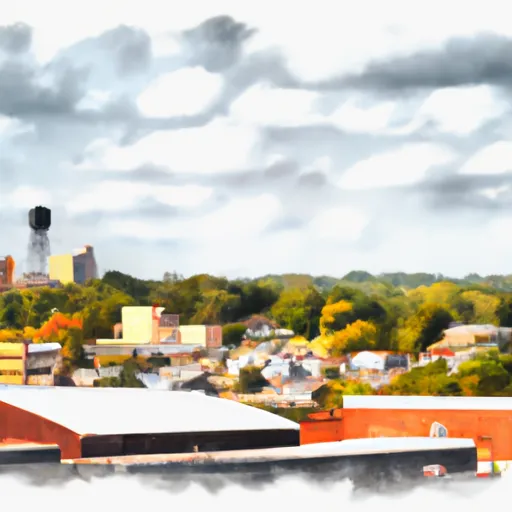-
 Snoflo Premium
Snoflo Premium
Get unlimited access to all our content
With no Ad interruptions! - Start Your Free Trial Login with existing account
Winfield
Eden Index
Climate
7.7
•
Recreation
3.4
•
Community
0.5
•
Safeguard
4.4/10

Winfield, Tennessee is a small town located in Scott County, nestled in the rolling hills of the Cumberland Plateau. The town enjoys a temperate climate with mild winters and warm summers. Average temperatures range from the mid-30s°F (1-2°C) in winter to the mid-80s°F (29-30°C) in summer.
Winfield is blessed with an abundance of natural beauty, surrounded by lush forests, rivers, and lakes. The town is situated near the Big South Fork of the Cumberland River, which provides stunning views and various opportunities for outdoor recreation. Fishing enthusiasts can enjoy catching smallmouth bass, rock bass, and catfish, among others. The river is also a popular spot for kayaking and canoeing.
In addition to the river, Winfield is close to several lakes, including the beautiful Norris Lake and the expansive Dale Hollow Lake, offering boating, water skiing, swimming, and camping opportunities. Hiking and camping enthusiasts can explore the numerous trails in the nearby Big South Fork National River and Recreation Area, allowing them to discover scenic overlooks, waterfalls, and unique rock formations.
Overall, Winfield, Tennessee offers an inviting climate, picturesque waterways, and various outdoor activities, making it a paradise for nature lovers and outdoor enthusiasts.
What is the Eden Index?
The Snoflo Eden Index serves as a comprehensive rating system for regions, evaluating their desirability through a holistic assessment of climate health, outdoor recreation opportunities, and natural disaster risk, acknowledging the profound impact of these factors on livability and well-being.
Climate Health Indicator (CHI): 7.7
Winfield receives approximately
1368mm of rain per year,
with humidity levels near 84%
and air temperatures averaging around
13°C.
Winfield has a plant hardyness factor of
6, meaning
plants and agriculture in this region thrive during a short period during spring and early summer. Most
plants will die off during the colder winter months.
By considering the ideal temperature range, reliable water supplies, clean air, and stable seasonal rain or snowpacks, the Climate Health Indicator (CHI) underscores the significance of a healthy climate as the foundation for quality living.
A healthy climate is paramount for ensuring a high quality of life and livability in a region, fostering both physical well-being and environmental harmony. This can be characterized by ideal temperatures, reliable access to water supplies, clean air, and consistent seasonal rain or snowpacks.
Weather Forecast
Streamflow Conditions
Upper Cumberland
Area Rivers
Upper Cumberland
Snowpack Depths
Upper Cumberland
Reservoir Storage Capacity
Upper Cumberland
Groundwater Levels
Recreational Opportunity Index (ROI): 3.4
The Recreational Opportunity Index (ROI) recognizes the value of outdoor recreational options, such as parks, hiking trails, camping sites, and fishing spots, while acknowledging that climate plays a pivotal role in ensuring the comfort and consistency of these experiences.
Access to outdoor recreational opportunities, encompassing activities such as parks, hiking, camping, and fishing, is crucial for overall well-being, and the climate plays a pivotal role in enabling and enhancing these experiences, ensuring that individuals can engage in nature-based activities comfortably and consistently.
Camping Areas
| Campground | Campsites | Reservations | Toilets | Showers | Elevation |
|---|---|---|---|---|---|
| Parksville | 93 | 872 ft | |||
| Harris Branch - Carters Lake | None | 1,230 ft | |||
| Thunder Rock | 42 | 1,140 ft | |||
| Ridgeway - Carters Lake | None | 1,282 ft | |||
| Amicalola Falls State Park | None | 1,779 ft | |||
| Morganton Point | 82 | 1,753 ft | |||
| Jacks River Fields | 14 | 2,865 ft | |||
| Sylco | 12 | 1,219 ft | |||
| Tumbling Creek | 8 | 1,505 ft | |||
| Doll Mountain - Carters Lake | None | 1,206 ft |
Nearby Ski Areas
Catastrophe Safeguard Index (CSI):
The Catastrophe Safeguard Index (CSI) recognizes that natural disaster risk, encompassing floods, fires, hurricanes, and tornadoes, can drastically affect safety and the overall appeal of an area.
The level of natural disaster risk in a region significantly affects safety and the overall livability, with climate change amplifying these risks by potentially increasing the frequency and intensity of events like floods, fires, hurricanes, and tornadoes, thereby posing substantial challenges to community resilience and well-being.
Community Resilience Indicator (CRI): 0.5
The Community Resilience Indicator (CRI) recognizes that education, healthcare, and socioeconomics are crucial to the well-being of a region. The CRI acknowledges the profound impact of these elements on residents' overall quality of life. By evaluating educational resources, healthcare accessibility, and economic inclusivity, the index captures the essential aspects that contribute to a thriving community, fostering resident satisfaction, equity, and social cohesion.

